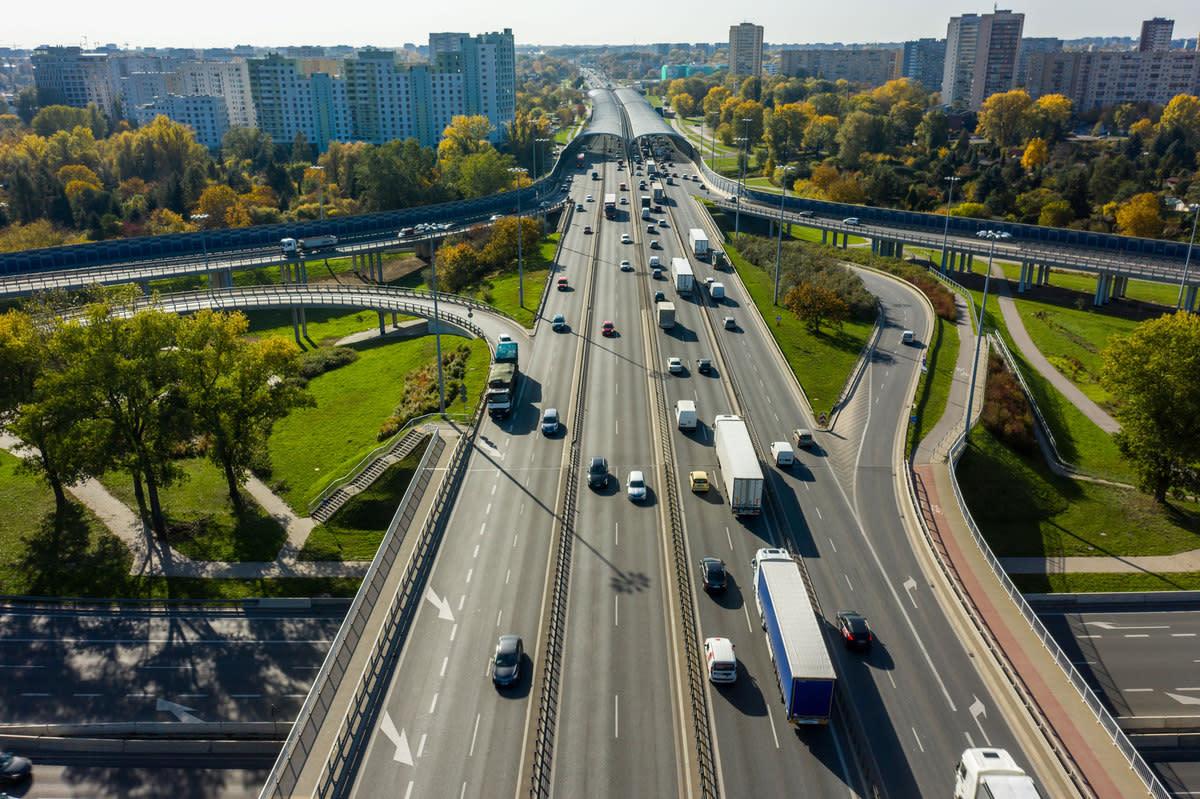The mobility industry is going through a paradigm shift where sustainability is climbing higher on the list of shareholder expectations. As a result, car manufacturers feel increasing pressure to, for example, apply sustainable practices throughout their business – not just in the electrification of their offering, but in all areas from the drawing board to production and aftermarket services. This change has brought new uncertainty into the horizon, and organizations can no longer expect everything to simply continue as before.
In order to help mobility companies stay in the driver’s seat for the future of the mobility industry and shape their own futures, in this blog post we will share five power moves based on our experience in the industry over several years.
1. Future-proof your business in Lean Startup mode
Let’s start things off with an example from a global B2B car leasing and renting business. A well-known and respected company had previously succeeded in a price-competitive market by delivering highly individualized and customized solutions. But in 2019, the market shifted as electric vehicles started to go mainstream, while there was still plenty of uncertainty in the air about the total cost of ownership of EVs as well as their value retention.
Read more on the electrification mobility
To future-proof its business, the company took a new strategic approach in a lean way. It decided to put more emphasis on listening to its corporate stakeholders, and began seeing gains and pains that many of them were not even aware of yet. The company also monitored the regulatory and taxonomic discussions in the environmental, social and governance (ESG) sphere as well as on the EU level. As a result, they understood that CO2 emissions were about to become a highly relevant factor in purchasing corporate fleet cars or light commercial vehicles – equal in importance to the total cost of ownership.
Next, the company went into Lean Startup mode in order to help its customers reach zero emissions within their corporate mobility fleets regardless of the stage they were on in that process. They first introduced a free-of-charge e-mobility guide for companies, and then started facilitating mobility workshops to help establish a guideline for corporate regulations.
Read more on zero emission mobility Read more on e-mobility
Before long, the company’s leasing and rental business had grown a third pillar of revenue out of its newly-developed consulting services – a completely new business area for them. This serves as a reminder of how crucial it is to listen to your customers and their problems carefully, and do your homework in order to anticipate their future gains and pains, and prepare your organization to meet their demands.
2. Understand market dynamics before envisioning the future
Next, we’ll take a look at an umbrella brand for a car manufacturer’s mobility service offering. The company focuses solely on a car subscription service where it strives to be the best – no more, no less. Users can order a car from their website in three minutes, and the new car will then be delivered in three days, which is an outstanding feat as this process can traditionally take around 2–12 months. It’s full-service, too with the cost including everything apart from fuel.
Read more - mobility ecosystems and cars
So how did they achieve this? By understanding the basic dynamics of the present as well as the future of the mobility industry – moving either people or goods – and how to improve on that.
Most companies focus on moving people, and to move them, you need physical assets such as airplanes, buses, trains, cars, and bikes – all of which can get quite expensive – and this is how things will remain until someone perfects the art of teleportation. In the mobility industry, the physical side is the tricky part of the equation.
For example, to run a car subscription service for a thousand customers, you’ll also need at least a thousand cars. And in order to own a fleet of a thousand cars, you’ll need to invest something to the tune of 30 million euros. You’ll also need to do (at the very least) a thousand maintenance operations every year – and that’s without counting incidental repair needs that are bound to happen now and then. That’s around three or four maintenance reservations a day if they’re spread evenly across the whole year.
In certain markets where proper winter conditions are a thing (such as in Finland) you’ll also need to change tires twice a year as winter comes and goes. Cars in these markets will also have two sets of tires per vehicle, and you’ll of course need to find enough storage capacity for the 4,000 unused tires somewhere. And if your customer happens to be based somewhere in the northern parts of Finland, you cannot tell them to just casually drive 800–1000 kilometers all the way down south to the Helsinki region for a simple tire change. So you’ll need to somehow deliver the extra tire sets to your customers. And so on, and so forth.
In order to succeed in future, you must understand these basics and ensure that your business is built on a solid and well-functioning supply chain. It’s no wonder, then, that the next big disruption in mobility is believed to happen on the supply side and in asset management, and it’s likely to take a long time. If you want to know where your mobility business is going, you’ll need to think about what will happen over the next 20 years. Once you figure that out, then you can start thinking about what might be realistic in the future within the next 12 months.
3. Utilize partnerships and ecosystems
Instead of constraining people into one car to drive from point A to point B every day, a promising startup wanted to offer people access to every mode of transportation – both those that exist today, and others that may eventually become available in the future.
The company wanted to offer the journeys as a service built into one easy-to-use application and utilizing a simple subscription format akin to Netflix or Spotify. Everything was going smoothly until the city where the service was about to be launched decided it wanted to control the traffic itself. Lesson learned: it’s important to understand the underlying regulatory implications and draft your contracts accordingly. Collaboration and partnerships within the mobility industry have the power to either make or break companies depending on whether they work.
Another similar example are e-scooters. As an increase in road accidents and problems with poor user behavior swept over city after city after the rollout of e-scooter services, the entire business was suddenly facing various restrictions and even banned in some locations. Hindered by the public outcry, many e-scooter businesses slowed down considerably, and became impossible to even sell, leading to many startups going bankrupt. In a complex business landscape like mobility you need many views in order to plan the future – you have to consider everything from infrastructure to consumer behavior and attitudes, and from business models to regulation.
4. Analyze the future methodically using strategic foresight
In most companies, business risks are (or at least should be) taken seriously. They are assessed and analyzed carefully, and then taken into account in business planning. But when you think about it – shouldn’t the exact same organizational response apply to business opportunities or even to industry opportunities as well?
In order to understand your potential business opportunities and the environment you will be operating in, you need strategic foresight, a category under the broader practice of futures thinking. It’s essentially an action-oriented approach that looks at the signals and trends that are happening, attempts to understand their long-term implications, and then circle back to present day to establish a clear picture of the kinds of actions we can take to prepare.
During the strategic foresight process, you first gather all the aspects, trends and signals that are relevant and influential to your domain. In order to find the correct focus, you need to apply certain practices, such as PESTLE analysis. You then categorize these findings into phenomena. The ongoing trends also have a natural tendency to coalesce into certain specific phenomena.
In the next phase, these phenomena are described in a chart we call the future table. This is crucial groundwork for the next steps. As any phenomena that we see around us today could manifest in many different forms in the future, you also have to outline many different alternative future possibilities. This, in turn, lays the groundwork for the scenarios – the stories of the future worlds built around the signals and trends that are taking place today.
Finally, the scenarios are represented as prototypes called provocative prototypes – they can be products, brands, companies, or political opinions that don’t exist yet. They are an embodiment of the risks, the roles, and the opportunities that companies may see for themselves in the future. This enables us to utilize the scenarios in strategy work and turn them into actions for your business units. As your employees participate throughout the journey, they start looking in the same direction, which helps the implementation of the strategy.
Taking the complexity of the mobility industry into account, a strategic foresight process requires partners that can actually address these opportunities and risks of certain size and magnitude. For example, operators such as insurance and energy companies can offer valuable insight – but at the same time, they could also learn a lot from mobility experts. If the strategic foresight work is done in isolation, people tend to reflect the future on their own cultural framework. This can prevent asking the most important, uncomfortable questions that might be crucial in the future. That's why strategic foresight needs an ecosystem approach, something we’ve previously addressed in the context of retail.
5. Gain more insight into the future of mobility
All the examples you’ve read about in this blog post come from actual companies in the real world, and there’s much more to be learned from them than what we were able to fit into this article. But luckily, we’ve made it easy to learn more and dive deeper into the subject by watch our recent future of mobility webinar, complete with amazing guest speakers sharing their thoughts and ideas!
The webinar includes valuable case studies from BMW Group company Alphabet Germany’s former Chief Commercial Officer Susan Käppeler, and Toyota Finance Finland’s General Manager of Mobility and Marketing Matti Tanninen. The Futurice representatives in the webinar were Principal Advisor and co-founder of MaaS Global Kaj Pyyhtiä, Head of Innovation Tuğberk Duman, and Head of Strategy & Culture Eeva Raita.
 Yannick EngelGlobal Product Director
Yannick EngelGlobal Product Director Tuğberk DumanHead of Innovation
Tuğberk DumanHead of Innovation Sebastian PhilippPrincipal Mobility, Germany
Sebastian PhilippPrincipal Mobility, Germany





